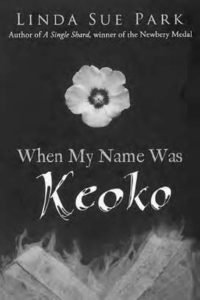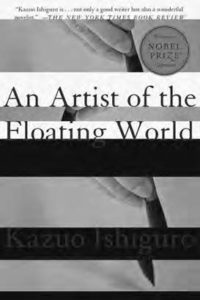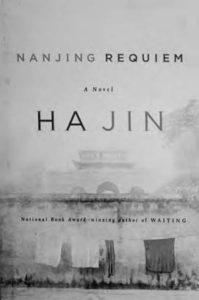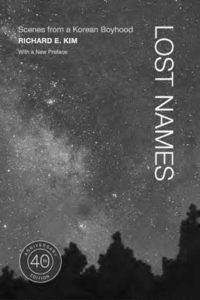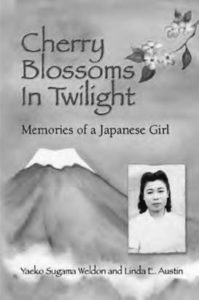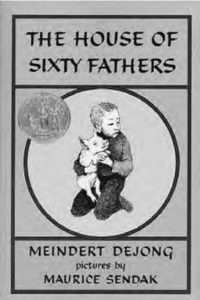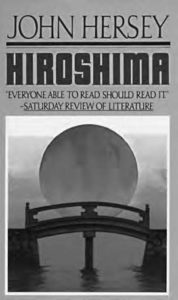In April 2014, Canadian popstar Justin Bieber inadvertently sparked outrage on Chinese and South Korean social media when he posted a photo of his visit to Japan’s Yasukuni Shrine. Established after the Meiji Restoration, the Yasukuni Shrine honors Japan’s war dead, and became internationally controversial after the remains of fourteen class-A war criminals from World War II were interred there in the late 1970s.1 Even a representative from the Chinese Foreign Ministry weighed in on Bieber’s visit, stating that “I hope this singer can learn more about the history of Japanese militarism, and the wrongful historical and militaristic views promoted by the shrine after the visit.”2
Lest Bieber become too much of a scapegoat, the truth is that many Westerners are unfamiliar with either East Asia’s traumatic memories of Japanese empire or the Pacific War. Many Americans cannot identify all of the countries the US fought in World War II.3 In China, the Rape of Nanking haunts the collective psyche. In South Korea, commemorations of “comfort women” are ubiquitous. In Japan, the legacy of the atom bombs looms large. Rather than be relegated to the past, memories of World War II in East Asia continue to shape national identities in the present, similarly to contested memories in the United States about the Civil War.
I often use examples such as Bieber’s memorable faux pas to create connections between the past and the present for students, using the lens of historical memory to pique their interest in East Asia’s World War II. Historical memory is a socially based reconstruction of the past that prioritizes the needs of the present over the veracity of the past.4 Originating in the 1920s, the field of memory studies grew increasingly prominent in the 1980s and became closely linked with memories of the Holocaust. Since then, it has spanned “any imaginable historical topic, from the tragic to
the mundane, from genocide and war to Mickey Mouse and landscape.”5 In the case of studying historical memory of World War II in East Asia, the content is overwhelmingly tragic.
When encouraging students to use the lens of historical memory to understand East Asia’s World War II, it is crucial to cultivate a sense of empathy and remind them that the actors involved are, first and foremost, human beings. One way to do this is through assigning first-hand accounts (either fictional or autobiographical), which many of my students have reported gives them a perspective that is far more impactful than abstract statistics could ever be. Trigger warnings are often helpful beforehand, as some of the accounts contain very graphic content, and it is important
for the instructor to check in with students individually and collectively from time to time about how they are faring emotionally. Rather than avoid such content, research has shown that challenging students to move beyond their comfort zones and to encourage an environment of “mutual vulnerability” are beneficial pedagogical approaches when working within posttraumatic
contexts.6
I recommend choosing firsthand accounts from Korea, China, and Japan so that students can cultivate empathy towards all East Asian nationalities. Importantly, as Elon University History Professor Yidi Wu points out, empathy is different from sympathy and is not the same as endorsement.7 Several books I have used for university students to cultivate empathy are When My Name Was Keoko by Linda Sue Park; Artist of the Floating World by Kazuo Ishiguro; and Nanjing Requiem by Ha Jin. All three books represent unique perspectives—When My Name Was Keoko is written from the perspective of a child growing up in Korea under Japanese colonization; Nanjing Requiem is written from the perspective of a Chinese woman who witnesses the Nanjing Massacre; and Artist of the Floating World is written from the perspective of an elderly Japanese man who, after the end of the war, reflects on his role as an artist for the Japanese imperial
army. For additional first-hand accounts that are appropriate to use with middle schoolers, high schoolers, and even mature elementary school students, I recommend the late Richard Kim’s Lost Names;8 Yaeko Sugama Weldon and Linda E. Austin’s Cherry Blossoms in Twilight; and Meindert DeJong’s Sixty Fathers.
In class, I assign students to lead book discussions, encouraging them to both situate the novels in historical context and come up with questions that will elicit rich responses. Let us take Linda Sue Park’s When My Name Was Keoko as an example. First, I would expect students to situate the novel within the context of Korea under Japanese colonization in the early to mid-1940s, when the Japanese empire imposed increasingly draconian measures on Koreans such as forcing them to change their names into Japanese. Second, I would expect students to come up with relevant questions —these should not be “yes” or “no” questions, but rather questions that nurture broader discussion and application. Examples of such questions would include “How do Sun-hee [the Korean protagonist] and her family secretly preserve their culture, and why is this important to them?” and “Why is learning to write in hangul [Korean script] so meaningful to the characters at the end of the book?”
In tandem with assigning first-person accounts, it is helpful to draw references to popular culture and current events to help students relate more to the historical content. For example, in the unit I taught on Korea’s experience of World War II under Japanese colonization, I played a video clip for my students of the internationally acclaimed Korean boy band BTS performing the famous Korean folk song “Arirang.”9 Although “Arirang,” which is included twice on the UNESCO Intangible Cultural Heritage List (for both North and South Korea), is estimated to have originated over 600 years ago, its contemporary significance to Korean culture is derived from its use as a resistance anthem against Japanese imperial rule.10
Regarding the Pacific War, I recommend introducing students not only to the direct conflict between Japan and the United States after the attack on Pearl Harbor, but also the historical factors that contributed to the eruption of total war. Some students may recognize the American perspective that “briefly and bluntly put, Japan started World War II in East Asia.”11 Less familiar may be the view held by some in Japan that Pearl Harbor was an act of self-defense.12 Students should be reminded, however, that the United States’ economic restrictions on Japan (including the embargo of desperately needed oil) were to protest Japan’s continued military expansion in Southeast Asia. Ultimately, the military government in Tokyo must shoulder the blame for triggering a costly war in the Pacific—a perspective that is notably shared by reputable Japanese academics as well.13
Relatedly, another contentious issue in the scholarly community is whether the atom bombs on Hiroshima and Nagasaki should have been dropped by the United States to induce Japanese surrender. To introduce this topic to students, I again recommend assigning a first-hand account. Journalist John Hersey’s Hiroshima, for instance, is a nuanced piece that captures the perspective of the Hiroshima victims both in 1945 and decades later. In addition, I encourage instructors to assign several accounts from both the “pro” and “con” perspectives to familiarize students with arguments for both sides. Such arguments include counterfactual death tolls of both American and Japanese victims; the applicability of human rights in an atmosphere of total war; the impact of the Soviet Union’s invasion of Manchukuo; and the looming specter of the Cold War.14 In this way, students can both develop empathy for the victims (Japanese, Korean, and
Allied POWs) while also appreciating that contentious historical issues such as this cannot be tidily resolved.
Pertaining to victims of the Pacific War, students should also learn about the over 100,000 Japanese Americans who faced forced incarceration in internment camps15 and the roughly 30,000 Allied POWs that perished in Japanese prison camps (and the overall number of roughly 140,000 captured) under severe physical and mental duress.16 Recommended first-hand accounts on these topics include Laura Hillenbrand’s Unbroken, the true story of American pilot Louis Zamperini and the tremendous suffering he endured; and Farewell to Manzanar by Jeanne
Wakatsuki Houston, which recounts the author’s experience as a child in the Manzanar internment camp.
When teaching about World War II in East Asia, I recommend that instructors tread carefully and caution students to avoid falling into the trap of black-and-white versions of history that demonize “the other.” I often use the following quote by European studies scholar Charles Meier to prompt reflection: “Historians should remain distrustful of any easy generalization concerning nations as a whole. . . . when it comes to what nations think and believe, we generalize at our own peril.”17 Students should take away the lesson that not only are these “easy generalizations”
harmful in the context of East Asia, but also when applied to other nationalities, ethnicities, or races. I teach my students that there is no such thing as national homogeneity when it comes to individual actors. For instance, in the context of Japan’s World War II, I make sure to point out that there were a number of Japanese that opposed the war. Moreover, there continue to be many excellent Japanese scholars and activists such as Yoshimi Yoshiaki, Honda Katsuichi, and Akira Iriye who have made significant contributions to uncovering historical truth about the war, no
matter how unpleasant.
To further avoid “othering” East Asia, I encourage students to draw connections between East Asian memory issues and those that we are facing in the United States today. For example, it is tempting to scapegoat Japanese textbooks by looking at the controversial (though seldomly used) Atarashii Kyōkasho (The New Textbook), which was approved by the Ministry of Education in 2001 even though it whitewashed many aspects of Japanese imperialism.18 However, rather than look at this textbook in isolation, students should brainstorm cases of how history has been distorted in secondary schools in the United States and elsewhere as well. Common examples may include the “Lost Cause” and the myth that the Civil War was primarily about states’ rights rather than slavery.19 In this way, students are more likely to view East Asian case studies as examples of broader, global trends.
History, particularly of World War II, is not for the faint of heart. When teaching such heavy content material, it is important to regularly check in with students concerning their mental and emotional health. Students are already under immense amounts of pressure, which can be exacerbated by triggering content. Thus, it is important to monitor the overall mood of the students and adjust accordingly for both individuals and the class as a whole. For individuals, assigning biweekly reflections can be a helpful way to gauge students’ reactions to the content they are learning. If individuals seem stressed or emotionally overwhelmed, it may be helpful to take a break one class and do an alternate activity related to East Asian history that complements the course themes. For instance, one week after the course content had been particularly emotionally demanding, I decided to devote one class period to listening to the national anthems of various East Asian nations. This dovetailed well into a larger discussion on the connections between historical memory and national identity.
In short, teaching about World War II in East Asia is hard. The material is emotionally taxing, and many students will arrive on the first day of class knowing little about East Asian (or Asian American) history.20 However, it is comforting to note that as instructors, our job is not to teach students everything, but enable them to expand their historical perspectives and become lifelong learners. Notably, our students have much to teach us as well —this past semester, I was incredibly privileged to teach several groups of students who were not only intelligent and hard-working, but also extremely kind and empathetic individuals. They reminded me that as historians, we should strive to approach East Asia’s World War II with humility and compassion, both for the historical actors we encounter and for ourselves.
1. Akiko Takenaka, Yasukuni Shrine: History, Memory, and Japan’s Unending War (Honolulu: University of Hawai‘i Press, 2015), 2.
2. Amy Qin, “China Bars Justin Bieber from Performing over ‘Bad Behavior’,” The New York Times, July 1, 2017, https://tinyurl.com/2v4yedmc.
3. Also of concern is evidence that an increasing number of Americans are unfamiliar with the European theater of World War II. For instance, a 2018 national survey out of the Woodrow Wilson National Fellowships Foundation Center found that “more than half of respondents (60 percent) didn’t know which countries the United States fought in World War II.” Furthermore, respondents under forty-five years old were over three times less likely to know these rudimentary facts when compared with respondents sixty-five years old or higher. Patrick Riccards, “News Release: National Survey Finds Just One in Three Americans Would Pass Citizenship Test,” The Woodrow Wilson National Fellowship Foundation, accessed September 5, 2022, https://tinyurl.com/2yppkrpu.
4. The term “historical memory” is often interchangeable with “collective memory.” Paul Cohen, History and Popular Memory: The Power of Story in Moments of Crisis (New York: Columbia University Press, 2014), 210.
5. Alon Confino, “History and Memory,” in The Oxford History of Historical Writing: Historical Writing Since 1945, vol. 5, Axel Schneider and Daniel Woolf, eds. (Oxford, England: Oxford University Press, 2011), 38.
6. Michalinos Zemblyas, “Critical Pedagogy and Emotion: Working through ‘Troubled Knowledge’ in Posttraumatic Contexts,” Critical Studies in Education 54, no. 2 (2013): 183-185.
7. Yidi Wu, “Reacting to the Past: Teaching Asian and World History through Role-Playing Games,” Education About Asia 27, no. 1 (2022): 67–68, https://tinyurl.com/bdcmx3p4.
8. Education About Asia has done extensive coverage of Lost Names and how to teach it at the junior high, high school, and college levels. See the Teaching Resources Essays by Susan Mastro, Peter R. Wright, and Richard H. Minear from vol. 4, no. 2, fall 1999, available at https://tinyurl.com/yc8nwbdz.
9. Anne Seoung Eun Bae, “Arirang: Folksong Beyond the Lyrics,” The Kraze, August 29, 2021, https://tinyurl.com/y67cbazw.
10. E. Taylor Atkins, “The Dual Career of ‘Arirang’: The Korean Resistance Anthem That Became a Japanese Pop Hit,” The Journal of Asian Studies 66, no. 3 (2007): 646–647.
11. Eric Bergerud, “Japan, the US, and the Asian-Pacific War,” Education About Asia 17, no. 3 (2012): 8–13, https://tinyurl.com/mwjk2che.
12. Daniel A. Metraux, “Teaching Pearl Harbor: A New Japanese Perspective,” Education About Asia 17, no. 3 (2012): 53–55, https://tinyurl.com/5hxv4ec8.
13. Ibid.
14. For the “pro” perspective, see Richard Rice, “Thank God for the Atom Bomb?,” Education About Asia 11, no. 1 (2006): 10–14. https://tinyurl.com/4ex3ecat. For a mixed perspective that includes some “cons,” see George P. Brown, “Learning from Truman’s Decision: The Atomic Bomb and Japan’s Surrender,” Education About Asia 11, no. 1 (2006): 20–24, https://tinyurl.com/5n79aezt.
15. Patricia Miye Wakida, “How a Public Media Campaign Led to Japanese Incarceration during WWII,” PBS The American Experience, accessed on August 17, 2022, https://tinyurl.com/3u76k24k.
16. “Prisoners of War of the Japanese 1939–1945,” Forces War Records, accessed on August 17, 2022, https://tinyurl.com/yjt8vc5e.
17. Charles S. Meier, “Foreword” in The Nanjing Massacre in History and Historiography, Joshua Fogel, ed. (Oakland, CA: University of California Press, 2000), ix–x.
18. It is also important to note that the majority of Japanese historians criticized this textbook and maintained that it was important to teach the younger generations about Japanese
military atrocities in World War II. John K. Nelson, “Tempest in a Textbook: A Report on the New Middle-School History Textbook in Japan,” Critical Asian Studies 34, no. 1 (2002): 129–148.
19. Caroline Janney, “The Lost Cause,” Encyclopedia Virginia, accessed on August 17, 2022, https://tinyurl.com/bdfshwec.
20. This may be changing, however. Last year, Illinois became the first US state to mandate the teaching of Asian American history. Kimmy Yam, “Illinois Becomes the First State to Require Teaching Asian American History in Schools,” NBC News, July 12, 2021, https://tinyurl.com/8pkhcu6n.


